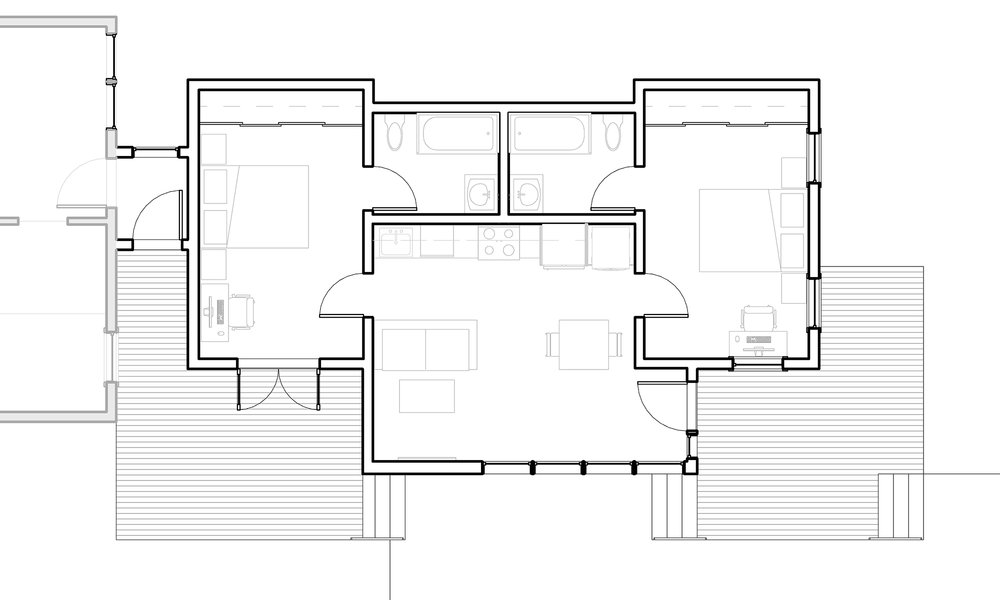When budgeting for your backyard dwelling project, many homeowners focus primarily on construction expenses while overlooking crucial financial factors. The average cost of 500 sq ft ADU in Los Angeles ranges from $200,000 to $350,000, but this base figure rarely tells the complete financial story. If not correctly anticipated, numerous hidden costs can significantly impact your budget and timeline, potentially creating stressful surprises.
Unexpected city fees that add up
Los Angeles imposes numerous municipal fees that catch many ADU builders by surprise. While you might budget for basic building permits, additional charges like school development fees ($3.50-4.50 per square foot), park impact fees ($5,000-10,000), and utility connection fees ($8,000-15,000) can add substantial unexpected costs to your project. These fees aren’t optional and must be paid before construction can begin. The Department of Water and Power often requires capacity upgrades when adding an ADU, sometimes necessitating transformer replacements costing $10,000-20,000 in older neighbourhoods. Similarly, sewer capacity charges assess whether the existing system can handle additional waste flow, potentially triggering connection fees of $3,000-8,000, depending on your property’s location.
Property challenges
Los Angeles properties often present unique site conditions that generate unexpected expenses:
- Hillside grading and retaining walls: $20,000-40,000
- Protected tree mitigation: $5,000-15,000 per tree
- Soil remediation for properties with contamination: $8,000-25,000
- Foundation upgrades in liquefaction zones: $15,000-30,000
Many homeowners discover these issues only after beginning the permitting process, when required soil reports and site evaluations reveal conditions that demand costly solutions. Los Angeles’s strict environmental regulations and seismic safety requirements leave little room for negotiation once these issues are identified. The city’s ageing infrastructure creates additional challenges. Many older neighbourhoods have inadequate water pressure, outdated sewer lines, or maxed-out electrical capacity. Addressing these deficiencies often cost of 500 sq ft ADU in Los Angeles becomes the ADU owner’s responsibility, adding thousands in unexpected costs.
Delays that drain your budget
The extended timeline for Los Angeles ADU projects creates significant carrying costs that many owners overlook. The current permitting backlog means most projects take 4-6 months for approval before construction begins. During this period, you’ll incur expenses like:
- Construction loan interest: $1,000-2,500 Monthly
- Inflation impacts on materials: 5-15% annually in today’s market
- Property tax pre-payments on improved value
- Architectural revision fees for plan check corrections
These time-related expenses can add $20,000-40,000 to your total project cost, depending on the length of delays. Los Angeles’s multi-departmental review process often creates unexpected timeline extensions, with each department potentially requiring changes that impact your budget.
Experts you hadn’t planned
Los Angeles regulations require numerous professional services that many ADU budgets underestimate. Beyond basic architectural plans, you’ll need specialised reports and design services from professionals familiar with the city’s complex requirements. These include Title 24 energy calculations, structural engineering specific to seismic zones, and detailed site plans. Survey costs present another surprise expense. While you might assume property boundaries are established, Los Angeles often requires new ALTA surveys for ADU projects, especially when buildings are near setback limits. These comprehensive surveys typically cost $3,000-7,000 but are non-negotiable when needed for the planning department.
The complex permitting process often necessitates hiring permit expeditors who understand the system, adding $5,000-10,000 but potentially saving months of delays and preventing costly mistakes. These specialised consultants navigate departmental requirements and identify potential issues before they become expensive problems during construction.

